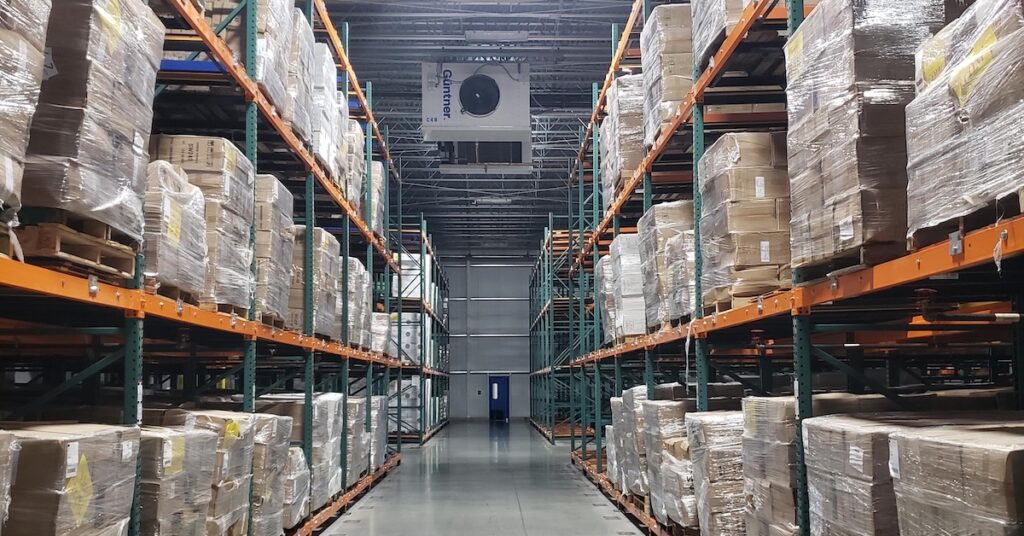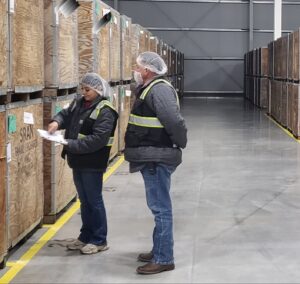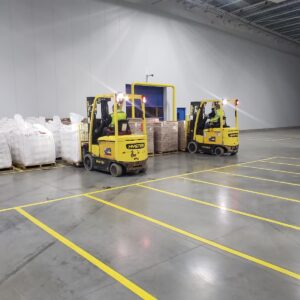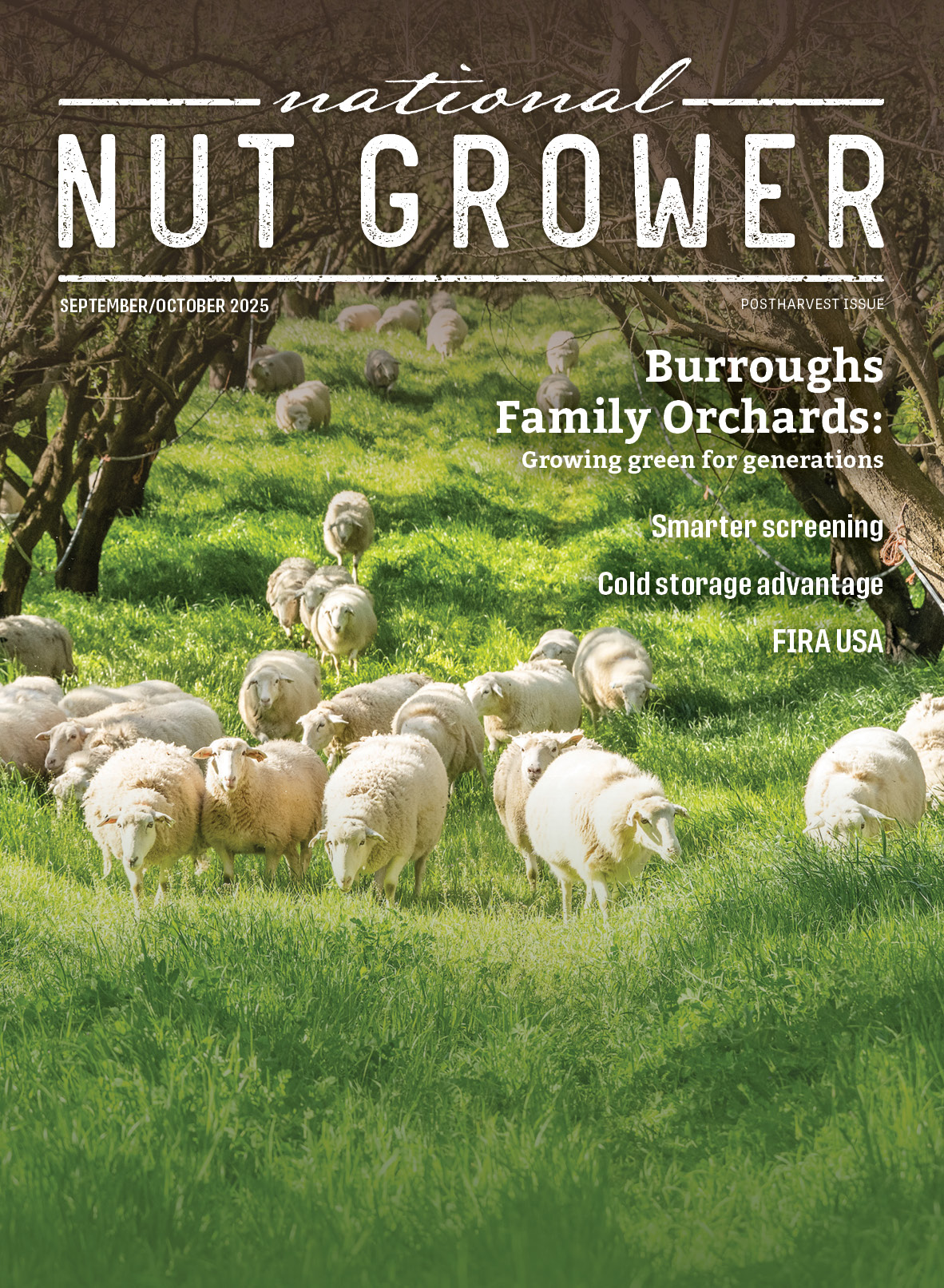
September/October 2025
Cold storage advantage: refrigeration boosts almond quality, market flexibility
When almond prices plunged after COVID-19, many growers were forced to sell quickly at a loss. Robert “Bobby” Sullivan thought there had
to be a better way, and he found it in an unlikely place: Napa Valley wine cellars.
Traditionally, almonds faced expensive storage options: frozen storage, repeated fumigations in ambient storage or a quick sell-off regardless of market prices. Drawing inspiration from cold wine storage techniques, Sullivan envisioned a different approach.
“That’s where I got the idea — look what they’re doing with wine. I thought we could do that with nuts,” said Sullivan, who has family ties to the wine industry.
In 2023, Sullivan co-founded Madera, California cold storage facility Amond World. The timing was critical.
“Right after COVID, the almond market dropped,” said Sullivan. “Farmers were barely able to break even,” said Sullivan.
That market pressure got him thinking about storage.
“That’s when I started to look at something in the almond business. My mother-in-law, whose family has been in the almond business since 1868, was always concerned about pricing — she would ask a year in advance, but you don’t get pricing until harvest,” he said. “I thought, ‘We could do this cold storage with almonds. If the market isn’t good, we can hold the product for two years.’”
According to the Almond Board of California, whole natural almonds can be kept in cold storage for two years without losing quality. For farmers, Sullivan said, that flexibility is critical. They can sell part of their crop to cover immediate expenses, then hold the rest until the market improves, all while maintaining quality.
“There’s no loss of integrity to the nut. It’s the same as when it came off the tree,” he said.
Alternatives for almonds

Sullivan also pointed to the 2011 Food Safety Modernization Act, which encouraged the food industry to reduce reliance on fumigation and chemical use. Cold storage supports that shift.
“Once it’s here, there’s no fumigation,” Sullivan said.
Alex A’Costa, Amond World plant manager, said cold storage is critical to product health.
“Our refrigeration keeps the product cold,” he said. “That’s what stops infestation and microbial growth. It’s like a hospital.”
This reduction in fumigation also opens export opportunities to countries with stricter chemical standards.
“A lot of suppliers use us because they can expand to countries that don’t want fumigated product, like India, Turkey and Spain,” A’Costa said.
While ambient and frozen storage still have a role in the industry, Sullivan believes cold storage is a cost-effective long-term alternative. He and A’Costa both believe demand for almond cold storage will expand in the coming years, especially as growers seek out new options.
“The industry needs to get away from renting containers and constantly re-upping fumigation. Fumigation is expensive,” said A’Costa. “Cold storage is safe quality food- and organics-certified, and provides a better option.”
Sustainable refrigeration
Unlike most cold storage warehouses and food processing plants that rely on ammonia refrigerants, Amond World uses carbon dioxide.
“Ammonia leaks are dangerous, flammable and could ruin an entire warehouse,” A’Costa said. “With CO₂, the risks are much lower. And this system is built specifically for nuts — we’re able store products at a temperature that’s even-keel to make sure they’re safe.”
Energy efficiency is also a priority. The facility relies on rooftop solar panels to charge batteries, with backup generators to support power needs during low-sunlight months.

“We’re trying to stay off the grid,” A’Costa said. “But because of the conditions we have in our area, we have to use natural gas as a backup for the batteries when they’re recharging — the batteries can’t fully charge in the winter when it’s overcast, but the generator helps recharge the batteries and keep everything running.”
Customer commitment
For Amond World, protecting both the product and the customer drives every decision.
“From cradle to grave, you want to make sure everything is taken care of,” A’Costa said.
The company uses a detailed inventory system that tags and tracks every delivery. Customers can retrieve their product with 24 hours’ notice. Before leaving the facility, almonds are placed in a tempering room where the temperature rises slowly, preventing shock to the nuts.
That focus on care and long-term vision motivated Sullivan to create Amond World in the first place.
“I just saw a need; nobody was doing it,” he said. “Sometimes, when you’re first, it isn’t always the best because it takes longer for people to understand. But I think it’s the right move going forward.”









